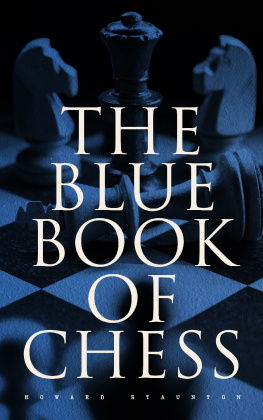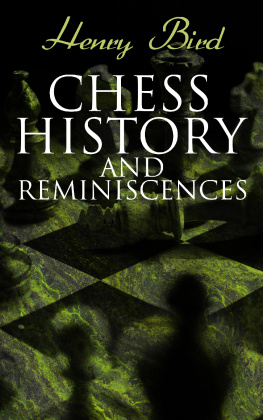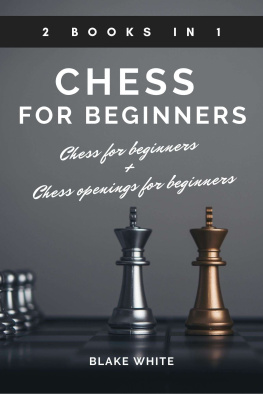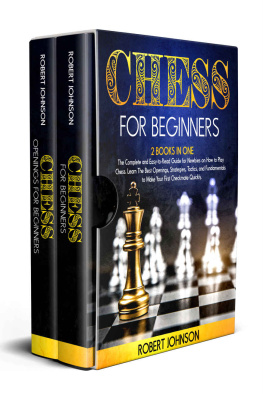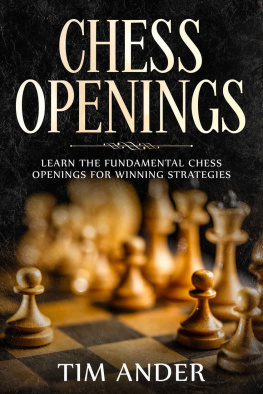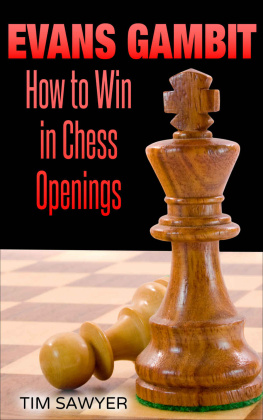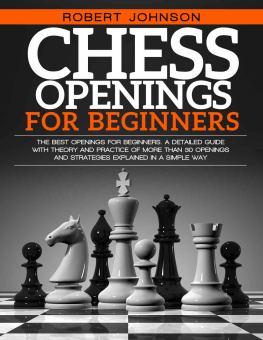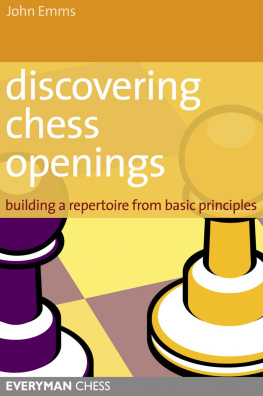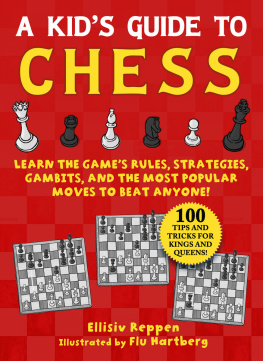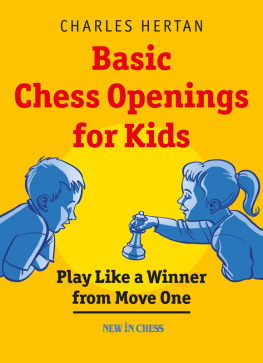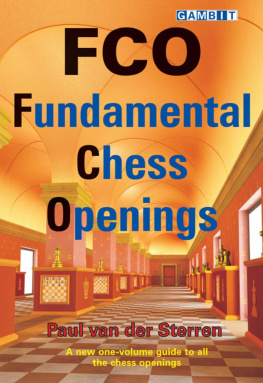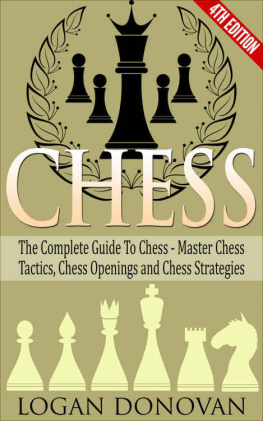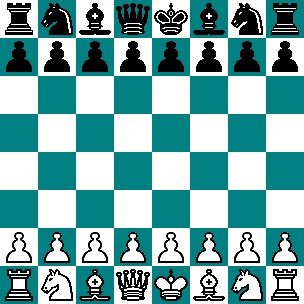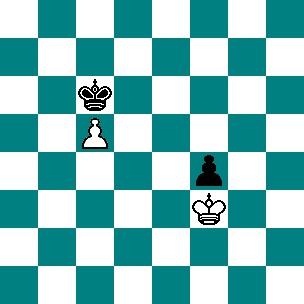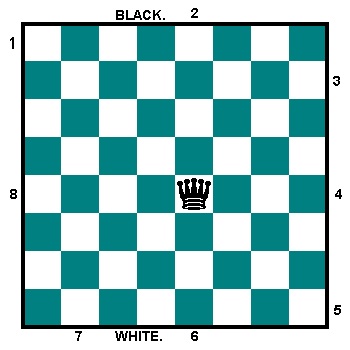CHAPTER I.
INTRODUCTION.
DESCRIPTION OF THE CHESS-BOARD AND MENARRANGEMENT OF THE MENTHE KINGTHE QUEENTHE ROOKS OR CASTLESTHE BISHOPSTHE KNIGHTSAND THE PAWNSTHEIR MOVEMENTS, POWERS, METHOD OF CAPTURING AN ADVERSE MAN, ETC.
DESCRIPTION OF THE CHESS-BOARD AND MEN.
The game of Chess is played by two persons, each having at command a little army of sixteen men, upon a board divided into sixty-four squares. The squares are usually colored white and black, or red and white, alternately; and custom has made it an indispensable regulation, that the board shall be so placed that each player has a white square at his right-hand corner.
The following diagram represents the board with all the men arranged in proper order for the commencement of a game:
No. 1.
BLACK.
WHITE.
Each player, it will be observed, has eight superior Pieces or officers, and eight minor ones which are called Pawns; and, for the purpose of distinction, the Pieces and Pawns of one party are of a different color from those of the other.
| A King |  |  |
| A Queen |  |  |
Two Rooks, or Castles
(as they are indiscriminately called) |  |  |
| Two Bishops |  |  |
| Two Knights |  |  |
| And each of these Pieces has his Pawn or Foot-soldier |  |  |
| making in all an array of sixteen men on each side. |
On beginning a game, these Pieces and Pawns are disposed in the manner shown on the foregoing diagram. The King and Queen occupy the centre squares of the first or "royal" line, as it is called, and each has for its supporters a Bishop, a Knight, and a Rook, while before the whole stand the Pawns or Foot-soldiers in a row. (To prevent a common error among young players, of misplacing the King and Queen on commencing a game, it is well to bear in mind that at the outset each Queen stands on her own color.) The Pieces on the King's side of the board are called the King's, as King's Bishop, King's Knight, King's Rook; and the Pawns directly in front of them, the King's Pawn, King's Bishop's Pawn, King's Knight's Pawn, and King's Rook's Pawn. The Pieces on the Queen's side are, in like manner, called the Queen's Bishop, Queen's Knight, and Queen's Rook; and the Pawns before them, Queen's Bishop's Pawn, Queen's Knight's Pawn, and Queen's Rook's Pawn.
MOVEMENT OF THE PIECES AND PAWNS,
AND MODE OF CAPTURING AN ADVERSE MAN.
A knowledge of the moves peculiar to these several men is so difficult to describe in writing, and so comparatively easy to acquire over the chess-board, from any competent person, that the learner is strongly recommended to avail himself of the latter means when practicable: for the use, however, of those who have no chess-playing acquaintance at command, the subjoined description will, it is hoped, suffice.
The "Pieces," by which title the eight superior officers are technically designated, in contradistinction to the "Pawns," all take in the same direction in which they move. This act consists in removing the adverse Piece or Pawn from the board, and placing the captor on the square the former occupied. To make this clear, we will begin with the King, and show his mode of moving and of capturing an adverse man.
 | The King. |  |
The King can move one square only at a time (except in "Castling," which will be explained hereafter), but he can make this move in any direction, forwards, backwards, laterally, or diagonally. He can take any one of the adversary's men which stands on an adjoining square to that he occupies, provided such man is left unprotected, and he has the peculiar privilege of being himself exempt from capture. He is not permitted, however, to move into check, that is, on to any square which is guarded by a Piece or Pawn of the enemy, nor can he, under any circumstance, be played to an adjacent square to that on which the rival King is stationed. Like most of the other Pieces, his power is greatest in the middle of the board, where, without obstruction, he has the choice of eight different squares. At the sides, he may play to any one of five, but when in the angles of the board, three squares only are at his command.
No. 2.
BLACK.
WHITE.
Supposing diagram No. 2 to show the position of the men towards the conclusion of a game, and it being either party's turn to play, he could take the adverse Pawn from the board, and place his King on the square it occupied; and, by doing so, the King would not depart from the order of his march, which, as we have before said, permits him to move one step in every direction. In each of these instances we have placed the Pawn in front of the King, but he would be equally entitled to take it were it standing on any other part of the eight squares immediately surrounding him, always provided it was not sustained or guarded by some other Piece or Pawn.
 | The Queen. |  |
The Queen is by much the most powerful of the forces. She has the advantage of moving as a Rook, in straight lines, forwards, backwards, and sideways, to the extent of the board in all directions, and as a Bishop, diagonally, with the same range. To comprehend her scope of action, place her alone in the centre of the board; it will then be seen that she has the command of no less than twenty-seven squares, besides the one she stands on. (Diagram No. 3.)
No. 3.
Thus placed in the middle of the board, the range of the Queen is immense. She has here the option of taking any one of eight men at the extremity of the board, on the squares respectively numbered 1, 2, 3, 4, 5, 6, 7, and 8, should her line of march be unobstructed; and if these men were nearer, on any of the intermediate squares, she would be equally enabled to take any one of them at her choice. Like all the other Pieces and Pawns, she effects the capture by removing the man from the board and stationing herself on the vacated square.

